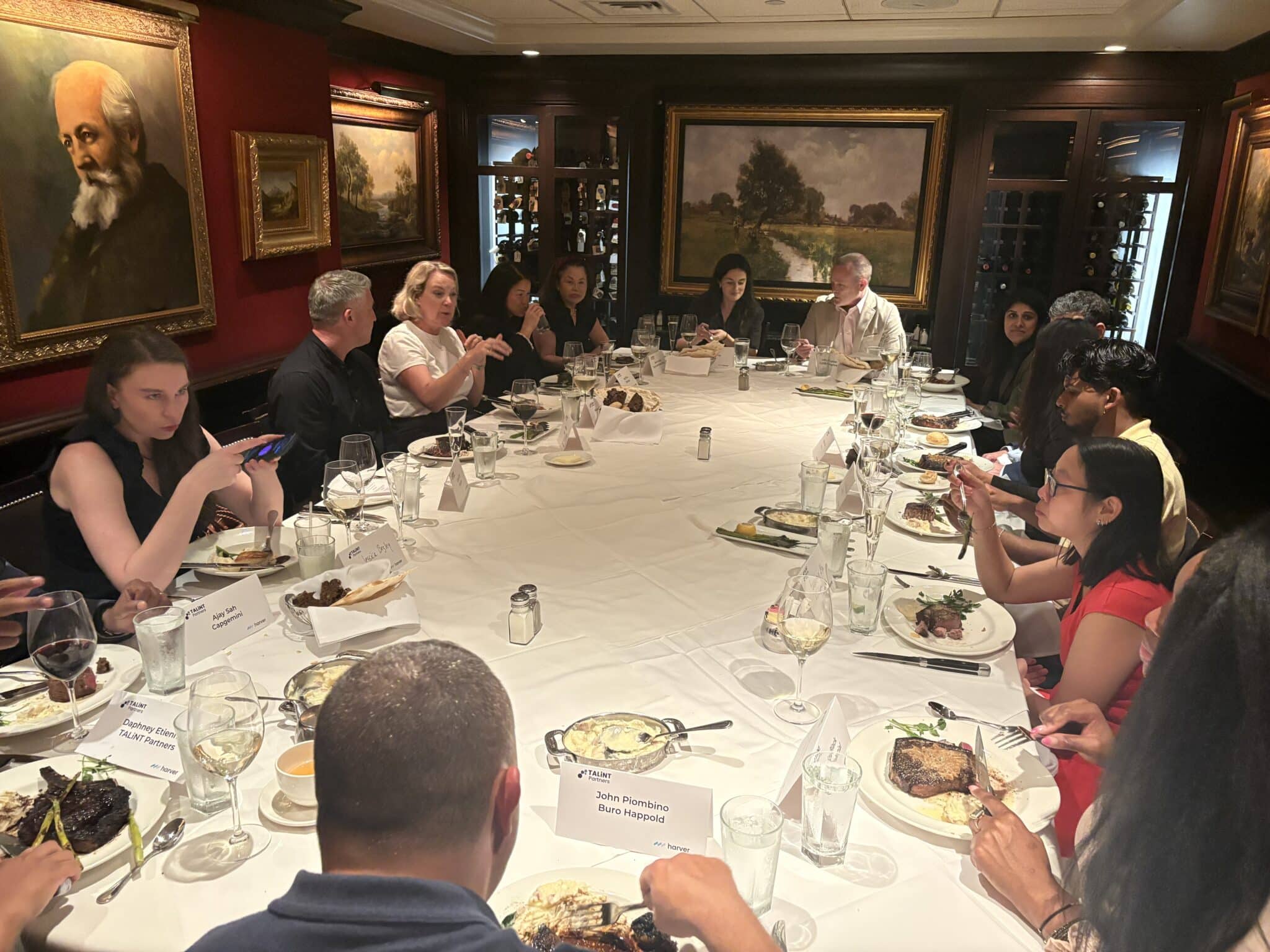Recruitment technology is significantly reshaping how organizations attract, engage, and hire talent. For talent acquisition (TA) professionals and HR tech leaders in the US, staying ahead of the curve is essential to remain competitive. We’re delving into three key areas of innovation; the expanding role of artificial intelligence (AI) in recruitment, the best practices for virtual recruiting, and the critical importance of selecting the right applicant tracking system (ATS) for your organization.
AI in recruitment: streamlining hiring processes
AI is fundamentally transforming the recruitment process by taking over repetitive tasks, enhancing the overall candidate experience, and providing data-driven insights for better decision-making. One of the most significant impacts of AI is its ability to streamline resume screening. AI-powered tools can quickly sift through huge numbers of resumes, identifying the most qualified candidates based on specific criteria. This automation will save recruiters significant time. It also makes the selection process more objective and consistent, reducing human error and bias.
Another notable advancement is the use of AI chatbots in recruitment. These chatbots are available 24/7 to engage with candidates, answering their queries, scheduling interviews, and providing updates on their application status. This constant availability significantly improves candidate experience by offering timely communication and support, which is often a critical factor in maintaining candidate interest. Meanwhile, recruiters can redirect their focus towards more strategic and value-driven activities, like building relationships with top talent or refining their hiring strategies.
AI’s role doesn’t stop at administrative tasks; it can also extend into predictive analytics, where it can analyze historical data to predict which candidates are likely to succeed and remain in the role long-term. By providing insights into potential future performance, AI can help recruiters make more informed hiring decisions, resulting in better candidate-job matches and a reduction in turnover rates. This predictive capability is invaluable in creating a more stable and productive workforce.
Also, AI can address one of the most persistent challenges in recruitment: unconscious bias. By evaluating candidates based solely on their skills and qualifications rather than demographic factors, AI can help to mitigate bias in the hiring process. This not only promotes a more diverse and inclusive workplace but also ensures that hiring decisions are made purely on merit, ultimately leading to a stronger, more capable workforce fit for the future.
Virtual recruiting: best practices for virtual job fairs and online interviews
The shift towards remote work has accelerated the adoption of virtual recruiting methods. Which has made them a critical component of modern talent acquisition strategies. The rise of virtual job fairs and online interviews makes careful planning and attention to detail crucial. These steps are essential to ensure a successful recruitment process.
One of the first steps in setting up a virtual recruiting event is selecting the right platform. It’s crucial to choose a reliable, user-friendly platform that supports video conferencing, chat functions, and document sharing. Popular options like Zoom and Teams are widely used, but specialized virtual event tools for recruitment are also available. The right platform can significantly enhance the overall experience, making it easier to communicate, share information, and engage with candidates.
Preparation is another key factor in the success of virtual recruiting events. Ensuring that both recruiters and candidates are well-prepared can make a substantial difference in how smoothly the process runs. Clear platform instructions and test runs to troubleshoot technical issues are essential before the event.
Use interactive elements in virtual events to keep candidates engaged and make the experience dynamic and memorable. Features like Q&A sessions, polls, and breakout rooms can foster a sense of connection and involvement, helping candidates feel more engaged with your organization. These interactive components not only break up the monotony of a standard online interview but also provide opportunities for deeper interaction and a better understanding of both the candidates and the company.
Finally, the importance of follow-up after a virtual recruiting event cannot be overstated. Promptly reaching out to candidates with personalized emails, providing feedback, and clearly outlining the next steps in the hiring process all contribute to leaving a professional impression. A well-managed follow-up process keeps candidates interested and engaged, reinforcing their positive experiences. This can tip the scales in your favor if they are considering multiple job offers.
Choosing and implementing the right ATS for your needs
An effective applicant tracking system (ATS) is crucial for streamlining your recruitment process, and selecting the right one demands careful consideration. Begin by conducting a thorough needs assessment to pinpoint your organization’s specific requirements. Consider key factors like company size, hiring volume, and the complexity of your recruitment process to identify the essential features your ATS must have.
Once you’ve clarified your needs, evaluate potential ATS options. Focus on core capabilities such as resume processing, candidate tracking, reporting, and integration with other HR tools. It’s important that the system is customizable to meet your organization’s unique needs. User experience is equally important. The ATS should have an intuitive interface that’s easy for both recruiters and candidates to navigate, enhancing efficiency and engagement.
Additionally, selecting a vendor with robust customer support, comprehensive training, and regular updates is essential. This ensures that you can maximize the system’s potential and quickly address any issues. Lastly, develop a detailed implementation plan with clear timelines, training sessions, and data migration strategies. Engaging key stakeholders early in the process will help ensure a smooth transition and successful adoption of the new system.
Looking ahead
As technology and innovation continue to reshape recruitment, the future promises even greater efficiency, inclusivity, and a more candidate-centric approach. Embracing AI, refining virtual recruiting practices, and choosing the right ATS will be essential for talent acquisition professionals and HR tech enthusiasts to remain competitive in an evolving talent market. These advancements will streamline hiring processes and improve talent attraction and retention. They will position organizations for long-term success.





